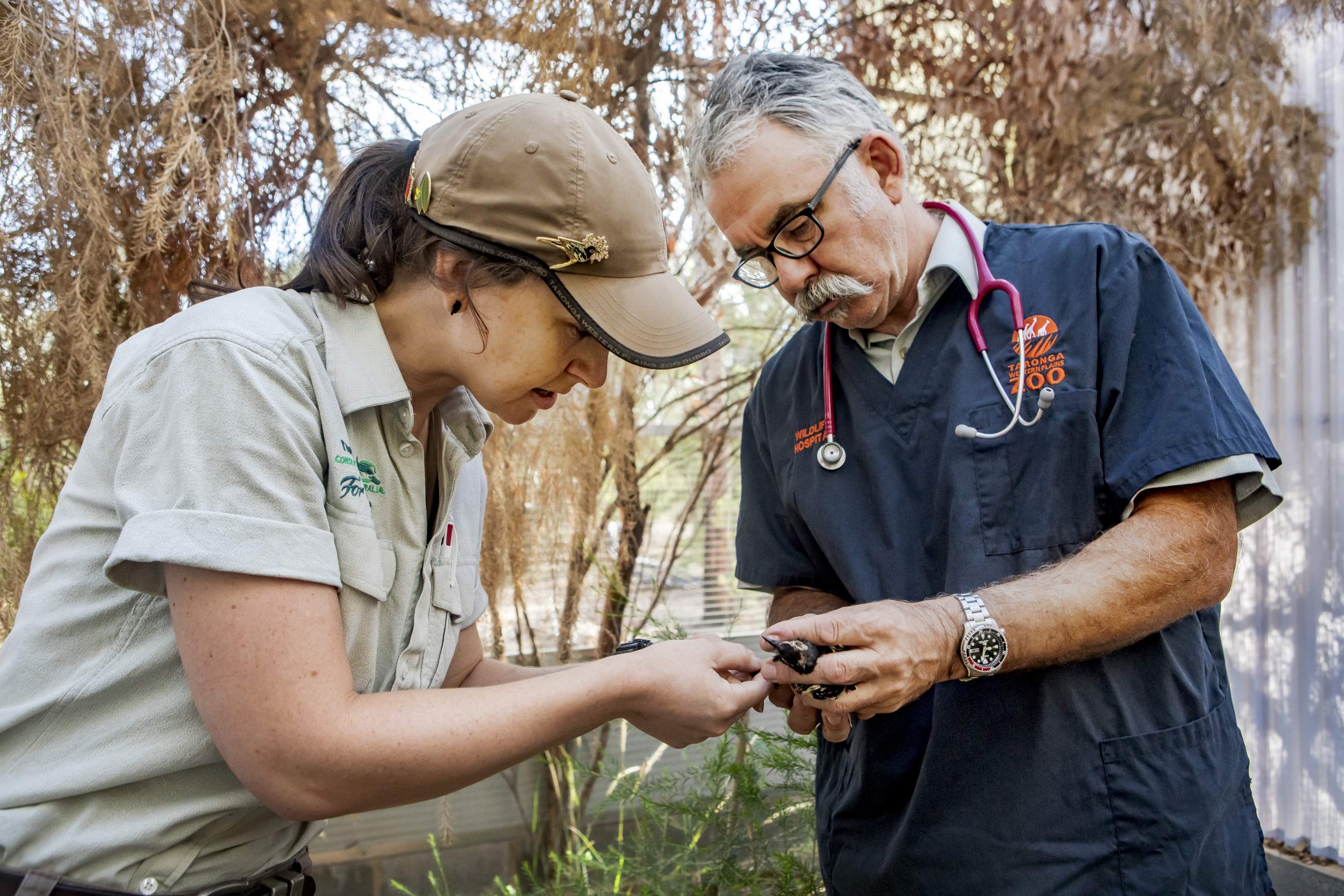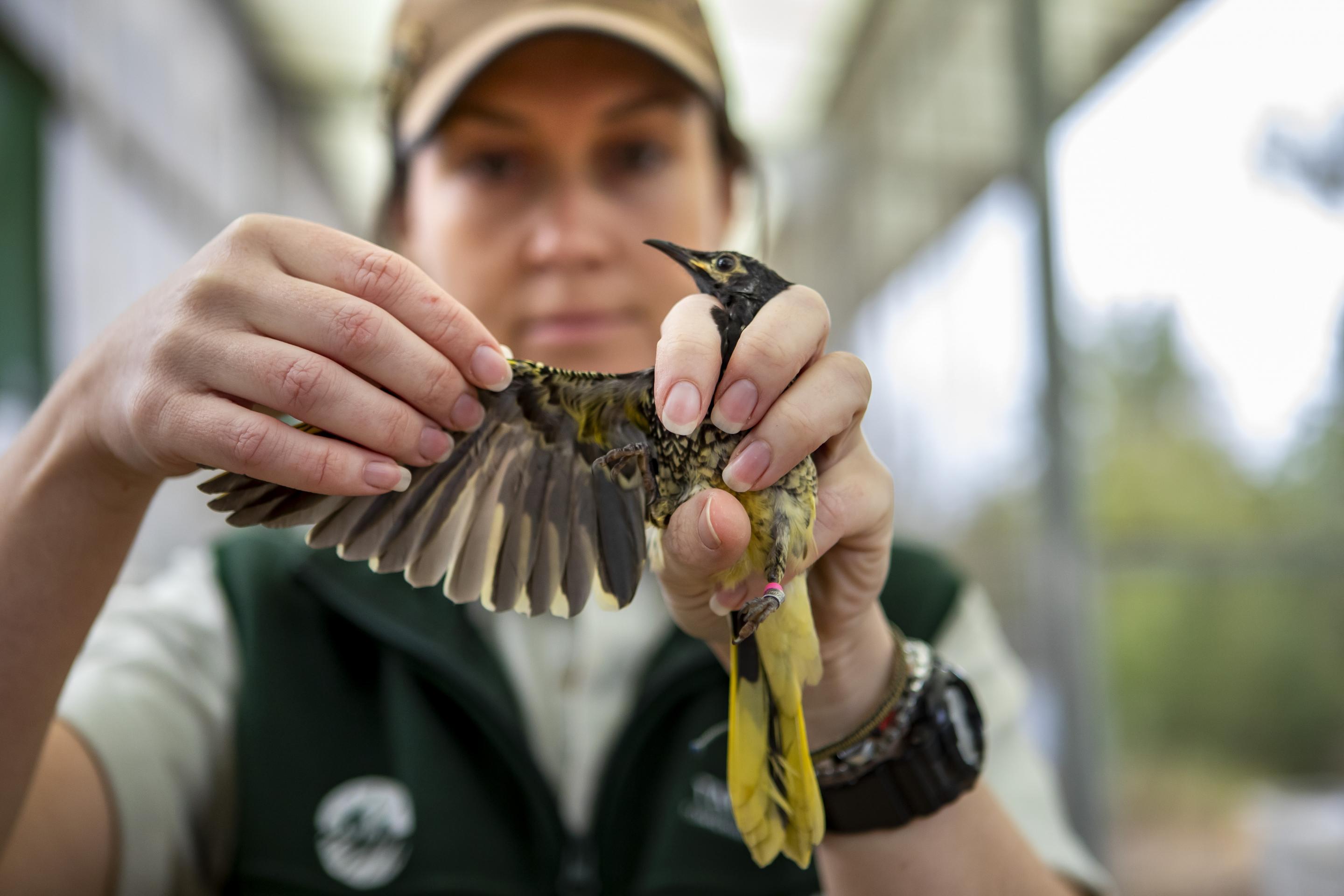Posted on 21st June 2021 by Media Relations
Spend five minutes getting to know Regent Honeyeater Keeper, Kara Stevens.
Kara Stevens has been a zoo keeper for the past eight years and works behind-the-scenes at Taronga Western Plains Zoo heading up the Regent Honeyeater conservation breeding program here in Dubbo.
What do you enjoy about your job?
I love the close interactions we have with the animals and how each day is different to the other. Getting to know and learn more about the species you work with and get them ready for the next stage of the program. Plus, I work in a really great team who support each other.
What has been your career highlight?
There have been many career highlights to date but landing a dream job to work here in Dubbo at Taronga Western Plains Zoo as part of the recovery program for the Regent Honeyeater has to be high on the list.
What is something people might not know about your job?
That there is a lot of preparation and work done behind-the-scenes, this isn’t just necessarily at the zoo but also with collaborative efforts with other partners. A truly unique aspect of my job is getting the chance to learn from the birds, and work with wonderful knowledgeable people who all have a common goal to get Regent Honeyeater back into the wild and conserve the species.
What is one thing people can do to contribute to ensuring a future for Regent Honeyeaters?
Knowledge. Become familiar with the Regent Honeyeaters in any way, shape or form and have a conversation. This can be with your peers or at a higher level, spreading the word gets the conservation started.
Protecting prime habitat in your area or planting native trees is a great way to support not only the Regent Honeyeater but also countless other species.
Become involved in local tree planting events, join in fauna surveys and report sightings of Regent Honeyeaters to Bird Life Australia are also ways to contribute to supporting this species.
Taronga Western Plains Zoo has three purpose-built facilities for the Regent Honeyeaters that are located behind-the-scenes at the Zoo. The Zoo welcomed it’s first birds in late 2019 and had a very successful first breeding season in 2020 with all six pairs producing chicks. The team are now preparing for the 2021 breeding season which will commence shortly.

